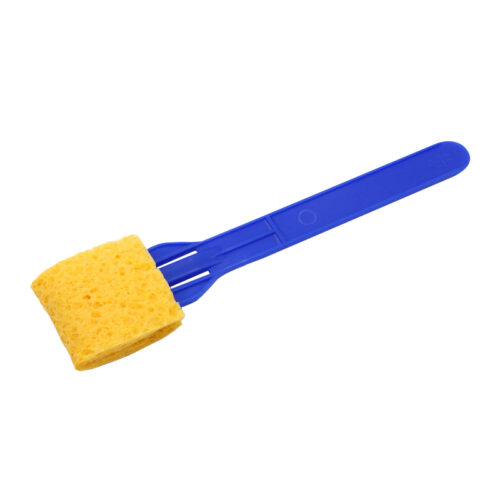Когда дело доходит до отбора проб окружающей среды или поверхности, Губки целлюлозы являются популярным выбором из -за их эффективности в сборе микроорганизмов и остатков. Однако, Точность и надежность ваших результатов в значительной степени зависят от того, насколько хорошо вы используете эти губки. К сожалению, Несколько распространенных ошибок могут поставить под угрозу целостность ваших образцов, приводя к неточным данным или загрязнению.
В этом сообщении в блоге, we’ll explore the most frequent errors made during cellulose sponge sampling and provide actionable tips to help you avoid them. By following these best practices, you can improve the effectiveness of your sampling process and ensure more reliable results.
 MEIDIKE GENE Cellulose Sponge
MEIDIKE GENE Cellulose Sponge
1. Failing to Properly Hydrate the Sponge
One of the most common mistakes is using a dry sponge. A dry cellulose sponge is less effective at collecting microorganisms or residues, which can result in under-sampling. To avoid this, always hydrate the sponge with the appropriate buffer or diluent before use.
Однако, be cautious not to oversaturate the sponge. Excessive liquid can dilute the sample or cause material loss during transport. Aim for a balanced level of moisture to ensure optimal sample collection.
2. Improper Handling Leading to Contamination
Contamination is a significant risk when handling cellulose sponges. Touching the sponge with bare hands or placing it on an unsterile surface can introduce unwanted microorganisms, compromising the sample’s integrity.
Чтобы предотвратить загрязнение:
- Always wear sterile gloves.
- Use aseptic techniques when handling the sponge.
- Avoid cross-contamination by using a new sponge for each sampling location.
- Dispose of used sponges properly after sampling.
3. Inconsistent Pressure During Sampling
The pressure applied during sampling plays a critical role in the quality of the sample. Applying too much pressure can cause the sponge to release collected material, while insufficient pressure may result in inadequate sample collection.
To achieve consistent results:
- Apply even, moderate pressure while wiping the surface.
- Use a consistent wiping pattern to ensure uniform sample collection.
4. Neglecting Proper Storage and Transportation
Once a sample is collected, improper storage or transportation can lead to sample degradation. Например, failing to store the sponge in a sterile bag or container or exposing it to incorrect temperatures can result in microbial growth or loss of sample integrity.
To preserve sample quality:
- Place the sponge in a sterile container immediately after collection.
- Store and transport the sample at the recommended temperature.
- Follow established guidelines for sample preservation.
5. Sampling an Incorrect Surface Area
Sampling an area that is too small or too large can skew your results. A small area may not provide a representative sample, while a large area can dilute the sample, making it difficult to detect contaminants.
To ensure accuracy:
- Follow standardized sampling protocols that specify the appropriate surface area for collection.
- Use templates or guides to maintain consistency in the sampled area.
6. Failing to Label and Document Samples
Proper documentation is essential for traceability and accurate analysis. Failing to label samples correctly or omitting critical details can lead to confusion and compromise data integrity.
To avoid this mistake:
- Label each sample with relevant information, such as the date, время, location, and sampling conditions.
- Maintain detailed records to ensure traceability and facilitate accurate interpretation of results.
7. Overlooking the Importance of Training
Even minor errors in technique can impact the reliability of your results. Without proper training, personnel may inadvertently introduce errors into the sampling process.
To minimize mistakes:
- Provide regular training sessions for all personnel involved in sampling.
- Emphasize adherence to standardized protocols and best practices.
Заключение
Using a cellulose sponge for sampling can yield highly accurate and reliable results—if done correctly. By avoiding these common mistakes, such as improper hydration, contamination, inconsistent pressure, and inadequate documentation, you can significantly improve the quality of your sampling process.
Помнить, attention to detail and adherence to best practices are key to obtaining meaningful and trustworthy data. Whether you’re conducting environmental monitoring, food safety testing, or industrial hygiene assessments, these tips will help you achieve more accurate and reliable results with cellulose sponge sampling.

















